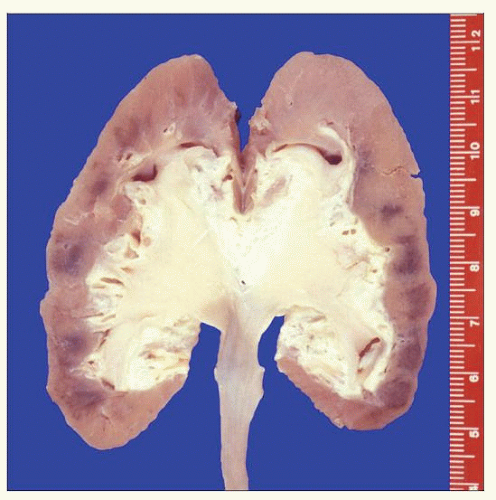Balkan Endemic Nephropathy
Shane M. Meehan, MBBCh
Key Facts
Etiology/Pathogenesis
Environmental toxin(s)
Aristolochic acid (AA) suspected
Clinical Issues
Slowly progressive renal failure in 30-50 year olds
Impaired concentrating ability and salt wasting, Fanconi syndrome later
Copper-toned skin, orange palms and soles, weight loss, anemia
Urothelial carcinoma develops in 30-50% of individuals with BEN
Microscopic Pathology
Interstitial fibrosis and tubular atrophy
Begins in outer cortex and expands to involve inner cortex
Scanty inflammatory infiltrate
Upper tract urothelial malignancy
 This atrophic kidney (7 cm in length) shows the typical features of Balkan endemic nephropathy (BEN) with marked thinning of the cortex and a smooth capsular surface. (Courtesy D. Ferluga, MD.) |
TERMINOLOGY
Abbreviations
Balkan endemic nephropathy (BEN)
Synonyms
Balkan nephropathy, Yugoslavian chronic endemic nephropathy, southeastern Europe endemic nephropathy, Danubian endemic familial nephropathy
Definitions
Chronic tubulointerstitial nephropathy with high risk of urothelial carcinoma, endemic in specific regions of Balkan countries, Romania, and Bulgaria
ETIOLOGY/PATHOGENESIS
Unknown
Tubulopathy is earliest lesion, and proximal tubules are probably major site of renal injury
Environmental toxin(s) are strongly suspected
Stay updated, free articles. Join our Telegram channel

Full access? Get Clinical Tree





